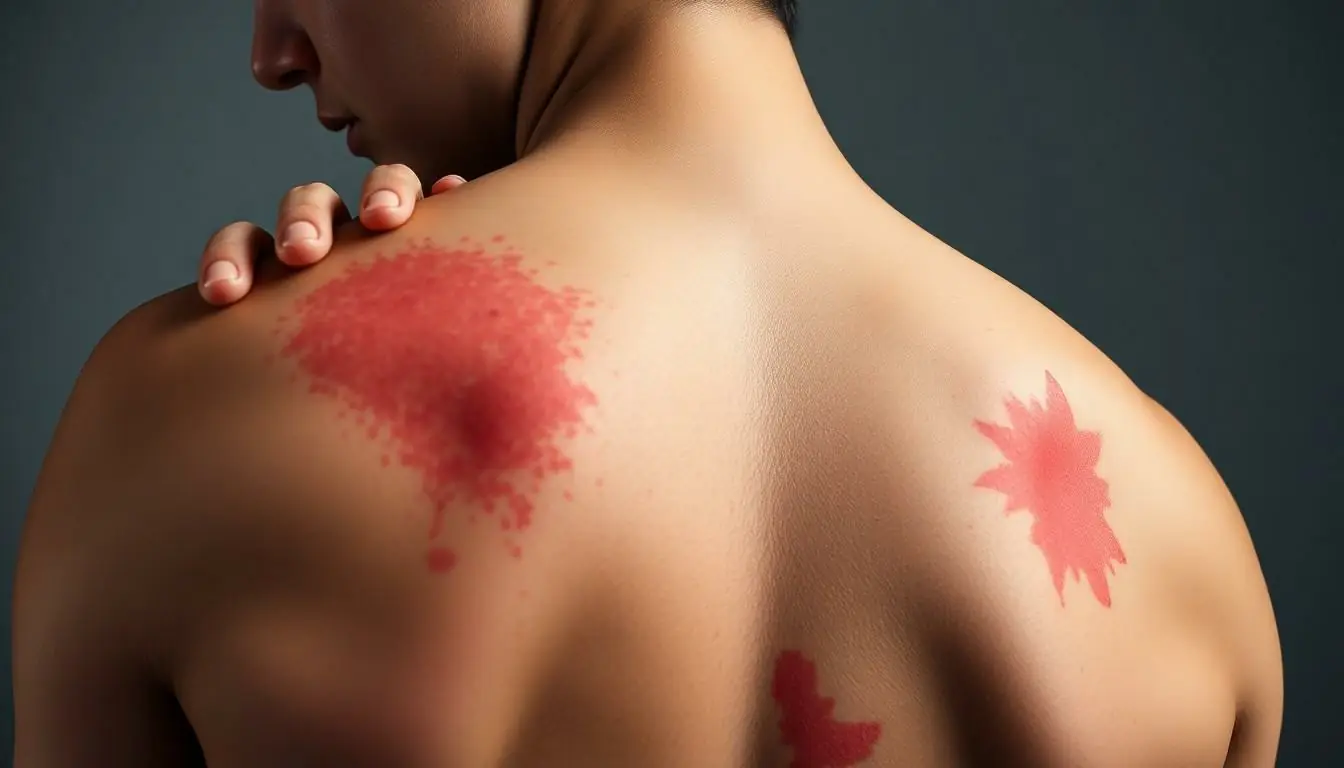Shingles isn’t just a pesky problem for the elderly; it’s crashing the party for young adults too. Imagine waking up one day with a rash that feels like a thousand tiny gremlins are having a dance-off on your skin. Not the kind of fun most young adults signed up for! This viral villain, often associated with chickenpox, can strike when least expected, leaving many scratching their heads—and not just from the itch.
Table of Contents
ToggleUnderstanding Shingles in Young Adults
Shingles has become increasingly recognized in young adults, diverging from the old belief that it only impacts older individuals. This viral infection can lead to significant discomfort and complications.
What Is Shingles?
Shingles, also known as herpes zoster, arises from the varicella-zoster virus. This virus remains dormant in the body after an individual recovers from chickenpox. Reactivation occurs when the immune system weakens, leading to painful rashes, blisters, and potential long-term nerve pain. The rash typically appears on one side of the body and can take weeks to heal fully. Symptoms often manifest as a burning sensation, itching, or tingling in the affected area.
Causes and Risk Factors
Several factors contribute to the development of shingles in young adults. A history of chickenpox significantly increases the likelihood of experiencing shingles later in life. Stress, illness, and immunosuppressive conditions can accelerate the reactivation. Young adults who are under high stress or those with weakened immune systems face a greater risk. Vaccination against shingles is available and can reduce the risk considerably, making it a vital preventive measure for those who qualify.
Symptoms and Diagnosis

Shingles in young adults presents with distinct symptoms. Recognizing these early signs is crucial for effective management.
Common Symptoms
Pain often manifests as a burning sensation along with a rash. The rash typically develops into red blisters, which can become crusty over time. Alongside these visible signs, individuals may experience itching or tingling in the affected area. Fatigue and fever can accompany the outbreak, adding to the overall discomfort. Many report that the pain can be severe and persistent, sometimes lasting for weeks or even months. Understanding these symptoms helps in seeking timely medical assistance.
Diagnostic Procedures
Diagnosis primarily relies on a thorough physical examination of the rash. Healthcare providers often ask about the patient’s medical history, specifically previous chickenpox infections. In some cases, blood tests may be conducted to confirm the presence of the varicella-zoster virus. Doctors may use polymerase chain reaction tests to detect viral DNA. An accurate diagnosis ensures appropriate treatment, reducing the risk of complications such as long-term nerve pain.
Treatment Options
Shingles treatment focuses on alleviating symptoms and promoting recovery. Several effective options are available for managing this condition.
Antiviral Medications
Antiviral medications play a crucial role in shingles treatment. These drugs, such as acyclovir, valacyclovir, and famciclovir, reduce the severity and duration of the outbreak. By blocking the varicella-zoster virus, antiviral medications lessen the intensity of symptoms. Early initiation within 72 hours of rash appearance optimizes their effectiveness. Patients often experience faster healing of blisters and reduced risk of complications. Health professionals typically prescribe these medications based on individual patient factors, ensuring personalized care.
Pain Management
Pain management strategies are essential for enhancing the quality of life during a shingles outbreak. Over-the-counter pain relievers like acetaminophen and ibuprofen help alleviate discomfort. For more severe cases, healthcare providers might recommend stronger prescription pain medications or topical treatments. Additionally, nerve blocks may provide relief for persistent pain. Alternative therapies, such as acupuncture and relaxation techniques, can also mitigate pain levels. Monitoring response to treatment allows for adjustments, ensuring optimal pain control tailored to the individual’s needs.
Prevention Strategies
Preventing shingles in young adults involves vaccinations and lifestyle changes. Following these strategies can significantly reduce the risk of outbreaks and complications.
Vaccination Recommendations
Vaccination plays a key role in shingles prevention. The Centers for Disease Control and Prevention recommends the Shingrix vaccine for healthy adults aged 50 and older, but younger adults without a prior chickenpox infection can also consult with a healthcare provider. Vaccination can decrease the incidence of shingles and its complications, including postherpetic neuralgia. Administering the vaccine in two doses provides better protection than older versions, such as Zostavax.
Lifestyle Modifications
Making specific lifestyle changes helps boost overall health and immunity. Stress management techniques like yoga and meditation reduce the risk of virus reactivation. A balanced diet rich in fruits, vegetables, and whole grains supports a strong immune system. Regular exercise contributes to overall well-being and can further enhance immune function. Additionally, adequate sleep is crucial for maintaining a healthy immune response. These modifications collectively contribute to lowering the chances of developing shingles in young adults.
Shingles in young adults is a growing concern that shouldn’t be overlooked. With the potential for painful symptoms and long-lasting complications it’s essential for young individuals to be aware of their risk factors. Vaccination presents a crucial opportunity for prevention while lifestyle changes can bolster overall health and immunity. Recognizing the signs and seeking timely medical attention can significantly improve outcomes. As awareness increases young adults can take proactive steps to protect themselves against this often-misunderstood condition.





